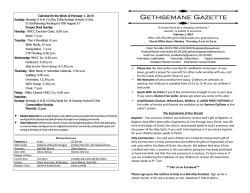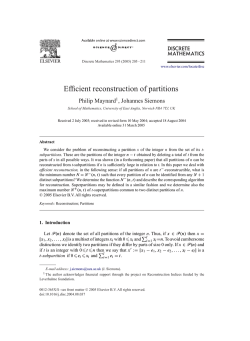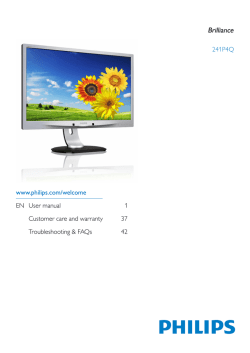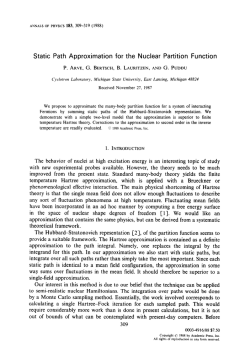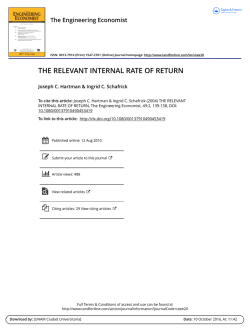
analysis of the attack surface of windows 10 virtualization
Rafal Wojtczuk [email protected] ANALYSIS OF THE ATTACK SURFACE OF WINDOWS 10 VIRTUALIZATION-BASED SECURITY aAgendaupa • • • • • Short reminder on VBS architecture Credential Guard properties and internals HV Code Integrity properties and internals Hyper-V security/complexity/attack surface More details in the whitepaper aScopeupa • Most of this research done with W10 1511 • Intel’s hardware (when hw mentioned) • Mixed original, little-known and well-known content VBS architecture aCredential Guard architectureupa Picture taken from BH2015 Microsoft presentation Mimikatz fails on CG-protected box aCG scenario 1upa • Admins just enabled CG in Group Policy • No further hardening • Easy to deploy aCG RPC interfaceupa LsaIso trustlet, running in VTL1, exposes the above functions via RPC over ALPC port \RPC Control\LSA_ISO_RPC_SERVER aNtlmIumProtectCredentialupa • Input (from lsass.exe): plaintext credentials • Output (from LsaIso.exe) : blob with encrypted credentials aNtlmIumLm20GetNtlm3Challen geResponseupa • Input (from lsass.exe): blob with encrypted credentials + NTLM challenge • Output (from LsaIso.exe): NTLM response aScenario 1 propertiesupa • After logon, no cleartext credentials in lsass • While user is logged in, lsass will auth to remote servers automatically (SSO), for attacker as well • If attacker collects encrypted blob, he can force LsaIso to auth even after logout (until reboot) • Demo Credentials during logon ? • There is still a problem with how the unencrypted credentials are initially delivered to VTL1 (which happens during logon).“rundll32.exe user32.dll,LockWorkStation”. • If not using smart-card based authentication, then the plaintext credentials can be captured by keylogger and used anywhere, anytime. • In case of smart-card based authentication, the NTOWF hashes sent by KDC can be captured and reused. aCG scenario 2upa • Credential Guard with armor key protection and smartcard-based authentication • Nontrivial deployment challenge • Possible to enable without TPM, but in such case no real advantage aCG scenario 2upa Picture taken from BH2015 Microsoft presentation aScenario 2 properties • No more cleartext creds in lsass, ever • Still, as before, until reboot, attacker can interact with CG and have it perform all SSOsupported authentications for remote resources • There is no reliable way to deliver “user has logged out, refuse future SSO” message to VTL1 aCG properties summary • Even in the most hardened configuration, once attacker has SYSTEM privileges, they can silently authenticate as logged-in user to remote servers, from the compromised machine, until reboot • No more classical pass-the-hash – but attackers can adapt and start lateral movement from the same machine, until reboot • In classical pass-the-hash, one can reuse stolen hashes anytime, from anywhere – thus CG is an improvement • Again, no hypervisor compromise required for the above attack, just root partition compromise VBS-enforced code integrity • Windows 10 can enforce code integrity of usermode binaries, usermode scripts and kernelmode code; the latter via VBS • We focus on kernelmode case • The goal – not allow execution of any unsigned code in kernel context, even if the kernel has been compromised VBS-enforced code integrity • Basic idea: trusted code (running in VTL1) agrees to grant execute rights in EPT tables of the root partition only for pages storing signed code • No such page can be both writable and executable Mixing signed & unsigned code • Common configuration: unsigned usermode code allowed, unsigned kernelmode denied • Usermode wants to execute unsigned code at C – VTL1 must grant execute right for C in EPT • Usermode switches to kernelmode, and jumps to C –? Kernel HVCI is based on secvisor • Separate EPT for code originating from signed and unsigned page • Root partition is configured so that any attempt by unsigned usermode code to enter kernelmode results in vmexit (and EPT flip) –IDT, GDT limits set to 0, syscall&sysenter disabled Kernel HVCI and kernel exploits • Attackers love arbitrary code running in ring0 • SMEP a problem, but natural bypass: – Get ROP capability, then clear CR4.SMEP – Or, via write-what-where, clear U/S bit in PT – Run your arbitrary code • Not working with Kernel HVCI ! • Also, cannot hook kernel code, at least not directly • Data-only exploits, or ROP-only, still fine Kernel HVCI bypass, MS16-066 • Before MS16-066 fix, there are some pages with RWX permission in root partition (kernelmode) EPT • Likely artifacts of early boot phase • Attacker can find them by probing each physical page for write and execute, in ring0 Kernel HVCI bypass, MS16-066 HYPERV-V SECURITY [Un]usual threat model • Usual model: hypervisor must be resistant to attacks coming from unprivileged, worker VMs • Without VBS, root partition is semi-trusted; it can compromise Hyper-V (no big deal) because – HvCallDisableHypervisor hypercall – Cleartext hiberfile – VTd not enabled • With VBS, the threat comes from the root partition Necessary support • Secureboot – many vulnerabilities in the past allowing secureboot bypass • VTd – without it, possible to overwrite hypervisor via DMA • TPM – needed to secure S4, see below Root partition privileges • Access to privileged hypercalls –Hypervisor Top-Level Functional Specification mentions 14 hypercalls usable by nonprivileged VM, and 67 privileged hypercalls. More hypercalls exist, entirely undocumented. • Possible to overlook some dangerous functionality, or e.g. memory corruption bug Root partition privileges • Access to almost all physical memory range –Without pages allocated for Hyper-V and VTL1 –Including • chipset and PCIe MMIO • ACPI NVS –LAPIC and VTd bars not accessible Root partition privileges • • • • • I/O ports: all available except: 32, 33 (PCH interrupt controller), 160, 161 (same) 0x64, lpc microcontroller (A20 gate) 0xcf8, 0xcfc-0xcff – PCI config space 0x1804. It is PMBASE+4 == PM1_CNT, it holds the SLP_EN bit, that triggers S3 sleep; see below Root partition privileges • • • • MSR – none available directly except : three SYSENTER MSRS fs/gs/shadow gs base So, Hyper-V has at least a chance to react properly Problem 1 – unfiltered MMCFG • MMCFG is a region of physical address space; access to it results in PCIe config space access – Device-specific registers, memory bars locations • REMAP_LIMIT/REMAP_BASE are locked • Overlapping RAM with PCIe memory bar does not work • Anything else interesting we can overlap/cover ? Overlap VTd bars But write access hangs the tested platform Problem 2 – chipset registers • Some memory-mapped regions, e.g. in MCHBAR, have thousands of registers, most of them undocumented at all • Are all of them locked ? Anything evil can be done ? • I do not know S3 sleep • S3 is fragile from security POV • Boot script hijack vulnerability from 2014 could be used to take control over the hypervisor – likely all firmware makes were affected • More potential attacks via S3 thinkable (see the whitepaper) S4 sleep • • • • • • S4 is even more fragile from security POV Need to protect integrity of hiberfile With VBS, it is encrypted Need to keep the key secret If TPM available, the key is sealed to TPM If no TPM, then the key is cleartext in UEFI variable S4 is insecure without TPM SMM • SMM is highly-privileged mode of CPU, unrestricted by hypervisor • Usually, firmware vendors pack quite some services in SMM; they can be invoked by write to I/O port 0xb2 • A lot of bugs in SMM found recently SMM code tends to be buggy SMM • It is well-known that SMM vulnerability can be used to compromise a hypervisor in runtime – BTW, secureboot as well • VBS allows direct access to I/O port 0xb2, as well as to ACPI NVS • Intel researchers demoed searching VTL1 memory for password hashes SMM abuse example SMM abuse example SMM Summary • Despite its limited scope, VBS is useful • A lot of effort by MS to make it as secure as possible; still, unusual attack surface • VTd, TPM strictly necessary (with secureboot) • SMM vulnerabilities the greatest threat Questions ? Extra slides: Non-VBS-specific threats • CPU erratas • Rowhammer • Flashable discrete hardware VTL1 attack surface • RPC services implemented in LsaIso (including RPC demarshalling code) • 48 services implemented in securekernel!IumInvokeSecureService (called by nt! HvlpEnterIumSecureMode) • VTL1 extensively calls into VTL0 to use some services – need to sanitize all responses Other funny chipset capabilities • E.g. chipset can program DRAM SPD • Capability locked by sane BIOS Picture taken from Wikipedia article on Serial Presence Detect
© Copyright 2025


